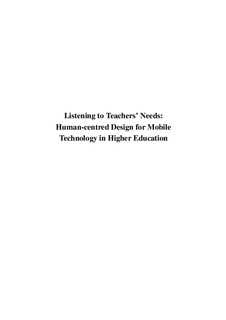| dc.description.abstract | Technology is developing fast. Especially mobile and wearable technology is on the rise. Educational technology has seen considerable developments in different technological areas recently. However, the vast development of everyday technology is not reflected in educational settings and the fast adaption of innovative technology is missing in the educational sector. This thesis applies a Human-centred Design (HCD) process to analyze the context of teaching in higher education, to understand teachers’ needs and requirements to design innovative and up-to-date technology. It was found that teachers lack motivation to integrate technology into their teaching processes. Learning tasks were found to be a critical component in teaching and learning processes. Therefore, the support of teaching processes around learning tasks was chosen as the central problem in this thesis. The use case of alpine sport teaching was chosen for an in depth analysis of learning tasks. To address the motivational problem, gamification was taken into consideration. Games are known for their motivational factors and effects. Due to the similarities between learning tasks and game tasks, an extensive analysis on how to design for motivating tasks based on lessons learned from game tasks was conducted. The findings include that certain game elements, structures and processes can be used to design for motivating learning tasks. From the context of use analysis in teaching and the findings from the game analyses, the Dynamic Questing (DynQ) concept was developed. The DynQ concept consists of learning task creation, task triggering, context sensing and feedback generation. A proof-of-concept prototype was developed to test out the DynQ concept and to be used for user testing with alpine sports teachers. After that, the concept was also tested with teachers from different teaching contexts. Further design and development of the system could help improve usability and user experience. This work forms a basis for the advancement of personalized and contextualized learning through mobile and wearable technology support. | |
